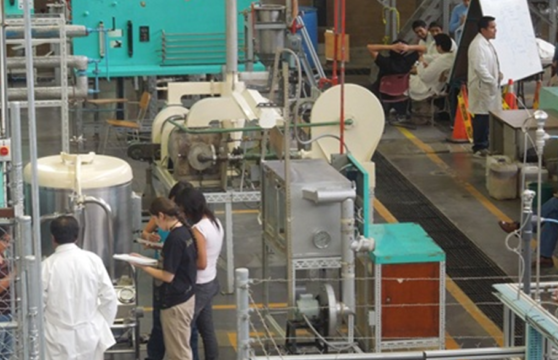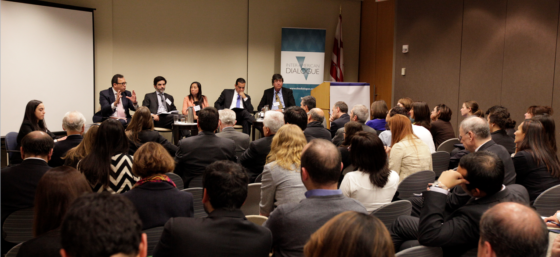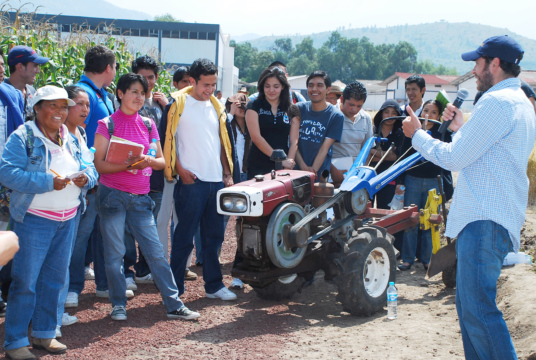
Where is all the Professional Talent in Latin America?
Latin America leads the world in talent shortages, and that the problem is getting worse
This post is also available in: Spanish
Secondary technical and professional education offered by the Ministry of Education of Costa Rica has a long-standing history. What started as a remedial or aid approach has gradually evolved towards a vision that aims to enhance the capabilities and entrepreneurial skills of its students.
It was a poor and largely agricultural Costa Rica which led Bishop Victor Sanabria to create, in 1953, the School of Arts and Professions for the Helpless, to offer training to young people who had no chance of admission to higher education. Such was the seed of technical and professional education in Costa Rica today, which has evolved into a much more modern country with an interesting diversity of production and technology. A country that in the fifties had more than two thirds of the labor force working in the agricultural sector, has now become one where more than two thirds of the population works in the service sector, and where all productive sectors – agriculture, industry and services – have undergone rapid modernization, with the consequent transformation of the labor market. This process has its ups and downs, and it shows with remarkable clarity the systematic two-way relationship between the conditions of the labor market and the education system. As we shall see, this is reflected clearly both in the evolution of the Technical Professional Schools and in their social and economic impact.
As expected for the time, vocational education in the fifties was aid- and remedial-oriented. Due to the impossibility of truly universalizing secondary education – with a gross coverage of less than 20% in those days – a more modest but vital objective was pursued: to give those young men who were not able to reach higher education, an opportunity to have at least one profession that would allow them a better life (and I am using the term “young men” purposely, because vocational education at these early stages was limited to men).
This process evolved in two complementary directions:first, by creating the National Training Institute – in 1965 – as the institution responsible for providing technical education to Costa Rican workers; second, through the creation and expansion of the Technical and Professional Schools of the Ministry of Education, which are the subject of this essay.
Often, the idea that nothing has changed in vocational education – as some people still refer to it – prevails, and the idea that these schools are still an option for those who are not willing or able to aspire to a professional academic training, staying at least with the machetito[i] given by the vocational track. This has changed. Unlike what happened in the past – and what still occurs in some countries – students of Technical and Vocational Schools in Costa Rica do not have to choose between a technical or a professional future. Instead hey have both doors open.
On the technical side of secondary education, in addition to receiving the appropriate academic training and getting a high school diploma, the student specializes in a technical area of his or her choice and receives a mid-level technical degree. This requires an additional year of study compared to the academic branch, and workplace training in the corresponding field, offering paths to both higher education and the technical labor market. The curriculum for the third cycle of the Technical Schools (from the seventh to ninth year), along with the academic subjects, includes two exploratory workshops in each grade. These workshops allow students to choose a specialization among the three existing areas: agriculture and livestock, industry or trade and services.
In 2006, the Higher Education Council – the organization in charge of education policy in Costa Rica – approved the Education Model Based on Competency Standards (EBNC for its name in Spanish) proposed by the MEP to address not only the requirements for a comprehensive training of students, but also the specific needs for their future participation in the workforce. A complete renovation of curricula and specializations was conducted based on this model; schools were equipped with the appropriate infrastructure and equipment, and progress was made in many training programs for teachers and students in specific projects.
As part of the specializations development process, Business Roundtables between the education and business sector are formed, aiming to strengthen the linkages between these two sectors to determine the needs of qualified human resources and their problems for recruitment. The Business and Community Regional Councils use the Business Roundtables to consult the productive sector and identify possible changes to the contents of the specilizations curricula, and changes in the occupational profile of the mid-level technician degree. The information obtained makes updating the educational offer possible, so it can respond effectively to the requirements of the labor market and enhance the employability of its graduates.
Following this process, from 2006 to 2014, the curricula of the 42 existing technical specializations were updated. In the same period, 13 new specializations were created. To improve students’ knowledge of English, the bilingual version of some existing specializations were additionally created upon the request of the business sector. In total, there are 55 specializations offered nationwide, as shown in Table 1.
|
Table 1: Technical Areas and Specializations (2014) |
|
|
Areas |
Specializations |
|
Agriculture and |
Agro-gardening, Agro-ecology, Irrigation and Drainage, Food Agro-Industry with Agricultural Technology, Food Agro-Industry with Livestock Technology, Agro-Livestock in Agricultural Production, Agro-Livestock in Livestock Production |
|
Trade and Services |
Customs Administration and Operations, Banking and Finance, Accounting and Auditing, Accounting and Costs, Accounting and Finance, Computer Science in Software Development, Computer Science in Networks, Information Technology Support, Business Computer Science, Accounting, Computer Networking, Computer Science in Software Development, Information Technology Support, Bilingual Secretary, Executive Service Center, Occupational Healthcare, Executive Secretarial Studies, Bilingual Secretary, Executive Service Center, Tourism in Foods and Beverages, Ecological Tourism, Tourism in Hospitality and Special Events, Rural Tourism, Coastal Tourism |
|
Industrial |
Management, Logistics and distribution, Automotive, Auto Repair, Construction, Architectural Technical Design, Fashion Design and Production, Furniture and Structural Design and Production, Electro-Mechanics, Electro-technology, Industrial Electronics, Telecommunications Electronics, Computer Repair Electronics, offset Printing, Industrial Textiles, Industrial Maintenance, Aeronautical Maintenance, Naval Mechanics, General Mechanics, Precision Mechanics, Refrigeration and Air Conditioning, Productivity and Quality. |
|
*The specializations in bold are offered in English (repetitions of specializations are due to translation) |
|
This curriculum change was complemented by an explicit effort to expand technical education coverage. By 2004, there were 71 vocational-technical schools (plus one evening class). Ten years later, the number of vocational-technical schools has increased to 132 (plus 83 technical evening classes). Most of this increase took place in rural and low-income urban areas that, together with the creation of evening classes, gave the opportunity to access technical education to a student population that could have hardly accessed it otherwise. The impact of the increased coverage has been significant: in 2004, 58,500 students attended technical and professional education, representing 18.4% of the corresponding student population; ten years later, the number of students served by these schools had reached 97,300, representing 26.3% of all students The priority given to increasing technical education coverage is clearly seen in the fact that while enrollment in academic schools rose by 5% from 2004-2014, technical education enrollment increased by 66% in the corresponding period. This increased priority in technical education required a significant investment, since the cost of technical education is higher than that of academic education.[ii]
The progress and changes made in Technical Education throughout the last decade consolidated the bases and conditions for the training of students who successfully incorporate themselves into the workforce and bring training closer to the evolution of the Costa Rican labor market. According to data from the National Household Surveys (INEC: 2012) workers who graduate from technical schools earn, when they start to work, an income that is 11.5% higher than the graduates of academic schools. While this result is a simple average, a recent thesis used a more sophisticated econometric model to conclude that “graduates from technical schools in Costa Rica actually have a statistically higher salary than academic school graduates, receiving around 10% more gross wages per hour worked, a result slightly lower than indicated by the INEC (11.5%) “.[iii]
We said, however, that while this was a story of ups it was also a story of downs. It is true that in the last ten years both content and coverage of secondary technical education has improved significantly; it is also true that the coverage of secondary education, in general, has improved significantly over the past fifteen years in Costa Rica, from 58% in 1999 to over 90 % in 2014. However, this improvement comes after one of the most significant educational tragedies of our history, whose effects are still being paid today. From the late fifties to the late seventies, Costa Rica had succeeded in increasing secondary coverage from 20% to only 60%. It was a remarkable effort. However, crisis management in the late seventies had a dramatic impact on education, with coverage falling again to 50% in 1984.
Two decades had to pass before Costa Rica recovered the 1979 educational coverage level. Those were actually two lost decades in terms of education, two decades in which half of young Costa Ricans did not even reach high school. Today, this is reflected in a dramatic statistic: more than half of the current Costa Rican workforce does not have secondary education. As a result, these individuals do not have access to the skilled and medium-skilled jobs offered by the labor market, which provide better wages. Nowadays Costa Rica shows a dual profile in both its economy and its labor market: workers who managed to complete high school and – especially – complement their academic secondary education with a technical or vocational training, do not only enjoy a formal, stable and productive employment, but also receive a good income; on the other hand, those who were not able to complete their secondary education, are relegated to less productive and poorly paid jobs, especially in the informal sector of the economy (today representing 44% of the employed labor force); even worse, they make up a significant part of the 10% of the workforce that is unemployed.
If the educational tragedy of the late seventies is a key factor in explaining the persistence of poverty and the growing inequality in Costa Rica since the beginning of the century, it is only to be expected that the recovery of the educational coverage with the consequent reduction of educational gaps and, in particular, the expansion and updating of technical and professional education, will truly open opportunities for economic development that can find a sufficient supply of qualified human resources for higher productivity, that in turn, are able to sustain increasing salaries for the workforce. As José Figueres said back in 1949:
“Increasing salaries and wages lead to greater efficiency in business management. Less productive activities are gradually abandoned. Agriculture and industry usually eliminate the so-called marginal businesses. New technical methods and new machines are introduced. Production rises, both in global terms and in relation to the hours of work invested. The work is valued. The man is dignified.”[iv]
Leonardo Garnier is a former Minister of Planning and Economic Policy (1994-1998) and Education (2006-2014) of Costa Rica.
NOTE: Except when explicitly noted otherwise, the information in this text comes from the publication: La educación subversiva: atreverse a construir el país que queremos. Memoria Institucional 2006 – 2014 del Ministerio de Educación Pública de Costa Rica. San José, Costa Rica, April 2014.
[i] The machetito refers to a machete and it points to receiving the basic tools for work provided by the vocational track.
[ii] The higher costs of technical and professional education arise from two different causes. First, the school day of the technical and professional branch lasts longer than the academic branch and involves an additional year of studies. Second, infrastructure and equipment are significantly more expensive, particularly for specializations that require sophisticated mechanical equipment.
[iii] Díaz Delgado, Esteban y Solano Cordero, Verónica: Diferencial salarial entre graduados de colegios académicos y colegios técnicos en Costa Rica, Memoria de Seminario de Graduación para optar por el Grado Académico de Licenciatura en Economía, Universidad de Costa Rica, Noviembre, 2015.
[iv] Figueres Ferrer, José: Escritos y discursos: 1942-1962 Editorial Costa Rica, San José, 1986: p. 236
Latin America leads the world in talent shortages, and that the problem is getting worse
Why expenditure on education in Latin America has not translated into higher productivity levels.
The current state of Latin America’s labor market presents opportunities for innovation in skills development systems.

